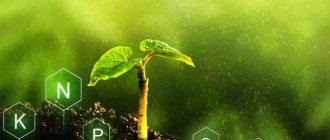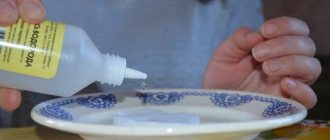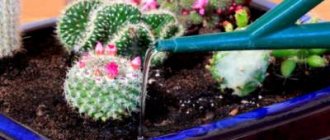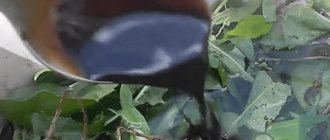What could be more beautiful than bright flowers on the windowsill in a room? The lush and fragrant blooms are especially pleasing to the eye in summer, when there is a snowstorm in the yard, and frost draws its patterns on the glass. It is difficult to imagine an apartment or house where there would be no house plants at all, because they create a special comfort in the room, and some of them are even humidifiers for dry air in the winter season. Well-chosen compositions from flower pots serve as a modern means of interior design. But in order for a plant to please you, it must be in good health.
What happens if you water indoor flowers with yeast solution?
It turns out that supplements made from yeast are useful for green “pets”:
- They promote their development and improve the composition of the soil, since yeast is a “beneficial” bacteria.
- They have a great effect on the growth of the root system of plants, because the development of the upper part of the flowers depends on their growth.
- Thanks to yeast, plants become healthier and better tolerate any diseases.
- For plants grown in seedlings, it is simply necessary to use a yeast solution, because due to it they tolerate transplanting better.
- As practice shows, such fertilizer has a beneficial effect not only on all types of indoor and garden crops.
What yeast to use
The product, which carries beneficial bacteria, is found in everyday life in dry and fresh form. There are also granulated, baker's and brewer's yeasts. To feed plants, yeast is used both in dry and fresh form. Do not use yeast that has expired. Some people mistakenly believe that if yeast is subjected to temperature changes during its production and culinary use (for example, put in the refrigerator), then this does not play a special role for plants. The gardener should take into account that he is dealing with living microorganisms. Also, this product may lose its properties when interacting with other bacteria. Therefore, the opened package of dry yeast should be hermetically sealed so that it does not lose its quality during further use. In order for the yeast to work, it needs to be given time. Only after the fermentation process will they begin to release those beneficial substances that vegetable crops need.
How to make fertilizer from different types of yeast
It only takes a few minutes to make yeast nutrition, because it is very simple to prepare. At the same time, it is necessary to note several ways to prepare a “healthy potion”. The main thing is what form the yeast is produced in (instant or “raw”).
Yeast is a very inexpensive product that is sold in almost all grocery stores, so such fertilizer will not require large financial costs.
A completely inexperienced florist can handle making an infusion from yeast. That is why this supplement has gained immense popularity in modern society.
Instant concentrated
To prepare the solution, you need to take a bucket of warm water and dilute 1 tablespoon of yeast in it. Useful fertilizer is ready! To enhance the effect, add 50 grams of granulated sugar to the solution. Experienced gardeners also recommend adding hops to the solution, since it enhances the fermentation effect.
However, adding sugar and hops is not necessary. However, in this case, the infusion requires a short exposure - 2 hours.
To water indoor plants, the prepared solution must be further diluted, since it is too concentrated and can cause burns to the tender roots of young seedlings.
The concentrated solution must be diluted in proportions of 1:5. One part fertilizer and five parts warm, settled water.
Some gardeners prepare the solution according to a different recipe: 1 teaspoon of sand, 1 tablet of ascorbic acid and 1 packet of dry yeast. All ingredients are mixed and dissolved in 10 liters of warm water. Place in a warm place for a couple of hours to steep. The feeding is ready!
Raw
If you only have raw yeast in the house, don’t worry and rush headlong to the store for dry concentrate. After all, they will make a delicious treat for indoor flowers. It is worth noting that preparing a useful solution is very easy.
0.1 kg of raw yeast is diluted in 10 liters of warm, settled water, and then left for 24 hours. Experienced gardeners say that this solution is most useful for perennial plants.
Which garden crops can be fed with yeast in the garden and which cannot?
They cannot be used to feed potatoes, onions and garlic .
The advantageous aspects of their use also include their vitality, which cannot be said about many other fertilizers. In our case, we also don’t have to worry about the risks of leaching out useful substances during rains. Even low temperatures, compaction and crushing are not afraid of fungi. Only aggressive bacteria can have a suppressive effect on them.
Next, we recommend watching a video that talks about how to properly feed plants with yeast, so that it does not harm them:
Top dressing tomato
Although gardeners know about the effect of feeding tomatoes with yeast, recipes from them, necessary for fertilizing young bushes in the open ground, will not be superfluous at all:
- For the first feeding, which is required a week after planting the tomato in the ground, you will have to dissolve 100 g of dry yeast in 10 liters of water (25-30°C). Add 2 tbsp to the solution. spoons of sugar, which will ensure their activation. After 2 hours of infusion, dilute the resulting starter in 50 liters of water. Under each bush you should pour 0.5 liters of the composition.
- After the tomatoes have rooted, a second feeding is carried out. Although this requires a similar composition, the dosage should be increased to 1 liter.
- The third feeding is done before flowering. Here you will have to add 2 liters of solution for each bush.
In the case of growing tomatoes in a greenhouse, two feedings are on the agenda: after the plants take root and before flowering. The following recipe is suitable for this: 10 g of dry yeast, 0.5 liters of wood ash, 0.5 liters of chicken manure (infused for 3 days in 10 liters of water) and 5 tablespoons of sugar - diluted in 10 liters of water. After just a few hours, the fertilizer can be diluted with water (1:10) and 0.5-2 liters poured under the bushes. It is best to use a watering can with a strainer. To avoid harm to the root system, you should retreat slightly from the shoots.
About feeding cucumbers with details
Due to the fact that this fertilizer helps draw potassium out of the soil and leads to a glut of nitrogen, abuse is highly undesirable. In addition, you should heed the advice regarding quenching yeast using wood ash.
Cucumbers are fertilized with a mixture prepared as follows: 2/3 of a 10-liter bucket is filled with black bread, filled with water and covered with a lid with pressure. Infusion is carried out in a warm place for 7 days. Under each bush, add 0.5 liters of a solution previously diluted with water (1:3). The procedure is not recommended to be carried out more than 5 times a season. There should be 2 weeks between waterings.
Nuances of feeding peppers and eggplants
For both peppers and eggplants, any of the above recipes will be suitable. But to increase productivity in open ground conditions, the composition of the mixture will have to be slightly changed. Particularly effective is an herbal cocktail, where 1 bucket of herbs (plantain, hops, nettle, etc.) contains 0.5 kg of bread (crackers) and 0.5 kg of baker's yeast. 50 liters of water are added here and left to infuse for 2 days.
Sourdough that contains 100 g of yeast, 50-70 g of sugar, 0.5 liters of ash and 0.5 liters of chicken manure extract will be no less effective. Sugar can be replaced with raisins or dried fruits. Before watering, all this is diluted in 10 liters of water and 2 liters of fertilizer are applied to the plants.
How to feed cabbage with yeast?
The intensity of cabbage growth allows fertilization to be achieved in a certain order: a month after planting; in another 20 days.
Photo: https://uf.ru/sites/default/files/styles/main_700/public/uploads/kapusta_1.jpg
The solution is prepared in this way: put 12 g of dry yeast in a 3-liter jar, add 100 g of granulated sugar, and pour warm water. At the end of fermentation (after 7-8 days), add 250 g of the mixture to 10 liters of water and feed the cabbage. But before applying fertilizer, you need to worry about pre-watering the plants with regular water.
Fertilizing strawberries
It is recommended to fertilize strawberries with yeast at least 3 times a season:
- During budding;
- With the beginning of fruiting;
- Upon completion of fruiting.
The following solution will be good here: add 100 g of yeast to 5 liters of water. After 24 hours, when fermentation is complete, every 0.5 liter of the mixture is diluted in 10 liters of water and 0.5 liter is poured under each bush.
Efficiency of flower feeding
The purpose of fertilizing flower crops 100% is to stimulate growth. To achieve the desired, almost everything that is at hand is added to the solution (scrap bread, crackers, leftover flour products, hops, potato tops, etc.). Per liter of water you will need about 200-250 g of such dietary supplements. After infusing the solution for 1 hour, dilute it with plain water (1:9) and begin watering the flowers.
This recipe has also proven itself to be excellent: add 10 g of dry yeast, 2 tbsp. sugar, 2 g ascorbic acid. After infusion for several hours, the solution is used for watering both garden and indoor flowers. In addition, it is recommended to add grass to it.
Yeast and rooting cuttings
To improve the rooting of cuttings, use a completely standard recipe of 10 g of yeast and 1 liter of water. The cuttings are placed in this solution for a day, after which they are washed and placed in clean water. The appearance of roots should be expected at the site of thickening. This method is used for rooting roses, ornamental and berry bushes.
Photo: https://lyubimaya-dacha.ru/wp-content/uploads/2019/07/a-49-1024×614.jpg
Use yeast nutrition for your plants and you will notice how their growth efficiency has increased and the development of the root system has improved. In addition, with such a solution, gardeners and gardeners will noticeably reduce problems with plant diseases and their pests.
How to use fertilizer correctly
All fertilizers are good, but it is worth remembering a sense of proportion. After all, for any plants, an excess of fertilizing is just as harmful as a lack of it. That is why, when making fertilizer from yeast, it is worth remembering its concentration and the feeding rates for each plant individually.
An excess of ozone in the soil can lead to intensive development of green mass, but the complete disappearance of buds.
It is important to remember that the need to replenish nitrogen reserves arises only in the spring, since during this period of time the green part of the plant begins to develop intensively. As soon as the plants begin to bloom, fertilizing should be stopped immediately.
Fertilizer for indoor plants prepared with yeast is very useful. Because it is a natural bio-product that contains no chemicals. The effectiveness of the solution lies in the effect of fungi contained in yeast on the most secluded corners of plants, where other fertilizers are unable to reach. This is why plants begin to grow better and bloom more actively. The results of using yeast nutrition can be seen after a week.
The solution is excellent for rooting cuttings. First, they are soaked in fertilizer for 24 hours and then rooted in clean water. Based on observations, we can safely say that after soaking, cuttings take root much faster and produce several times more roots.
Video: Yeast for indoor plants
Yeast solution is used to feed vegetable seedlings, indoor flowers, and garden strawberries during transplantation. There are several basic rules for applying fungal fertilizer:
- yeast fungi reproduce better in water, the temperature of which is about 500C, so fertilizers must be applied to warm soil;
- You can only use freshly prepared solution;
- Frequent application of fertilizer is contraindicated;
- It is best to alternate the application of yeast fertilizers with ash fertilizers, since ash can replenish the necessary microelements that are washed out during fermentation.
Which plants love yeast feeding?
A variety of plants respond well to this feeding.
- All vegetables, but cucumbers, tomatoes, and peppers react especially rapidly;
- Fruit trees, shrubs, strawberries;
- Houseplants.
But be careful: feed the plants two, maximum three times per season:
- In spring to stimulate vegetation;
- In the summer before the period of active fruiting;
- And during the recovery period, that is, after fruiting (but this is not necessary).
Advice from professionals
Agronomists advise using yeast fertilizer only on warm soil. Otherwise, the fungi will simply stop fermenting, which means that the desired effect will never occur. Therefore, the warmest spring month of May is considered the best time to fertilize garden crops.
To feed flower crops, the solution should not be used too often. It is best to use it during the period of crop transplantation, as well as in the summer. If there are weak plants in the garden or flower bed, then watering them with a yeast solution will be a life-saving procedure for them. However, it is worth remembering that overfeeding the plant has a detrimental effect on it.
After adding the yeast solution, the soil must be fertilized with ash, as it will restore the soil balance of calcium and potassium.
Fertilizing flowers, shrubs and vegetables with yeast: general rules
It is worth taking note of the following recommendations:
- You can fertilize with yeast only until the second half of June. It is at this time that the green mass reaches its maximum growth. After this, root crops cannot be fed, as excess nitrogen will be harmful to them.
- Work must be carried out on a warm day. The optimal air temperature is 20–24 degrees (maximum 32). The soil should also not be cold, at least 13 degrees. In cold and unheated soil, fungi do not work, so the work will be wasted. To achieve the desired effect, fertilizing should be applied only in sufficiently warmed soil.
- The best time of day is morning or twilight, when the sun's rays are not so aggressive. This rule is especially important to follow in hot weather.
- Before fertilizing, it is always recommended to add ash, saltpeter or potassium sulfate to the soil. This is due to the fact that living fungi need sufficient amounts of potassium and calcium.
- It is worth using other fertilizers in advance (6-8 weeks in advance). Poultry droppings, cow manure, compost will do. But you cannot mix them or use them simultaneously with yeast, as the latter will become useless.
- The soil should not be dry. Before fertilizing, it is necessary to moisten the soil.
- You can also carry out foliar feeding by spraying. Plants always receive nutrients faster through foliage and become strong and powerful. The main thing is that the solution is not too concentrated. Spraying is best done in the evening when the sun sets.
- The solution can also be used to accelerate the rotting of the contents of a compost pit. This will allow the compost to mature much faster. The main thing is that the temperature outside is not below 18 degrees, otherwise the fungi will not multiply.
It is very important not to overfeed. The optimal timing is the first time when planting seedlings, the second time a month later. During the season you can feed a maximum of three times. If you do not follow this rule, the balance of the basic elements of the soil will be disrupted. Excess carbon dioxide and nitrogen have a bad effect on the future harvest, as the plant begins to produce too much green mass and few fruits. You can feed sick and weak plants more often.
Now the answer to the question of whether it is possible to fertilize garden crops with yeast is clear. This simple and inexpensive method allows you to grow natural and healthy products on your plot. To get a rich harvest, you don’t need to buy expensive combined mineral fertilizers in gardening stores, which cannot be called completely natural and safe in composition.











